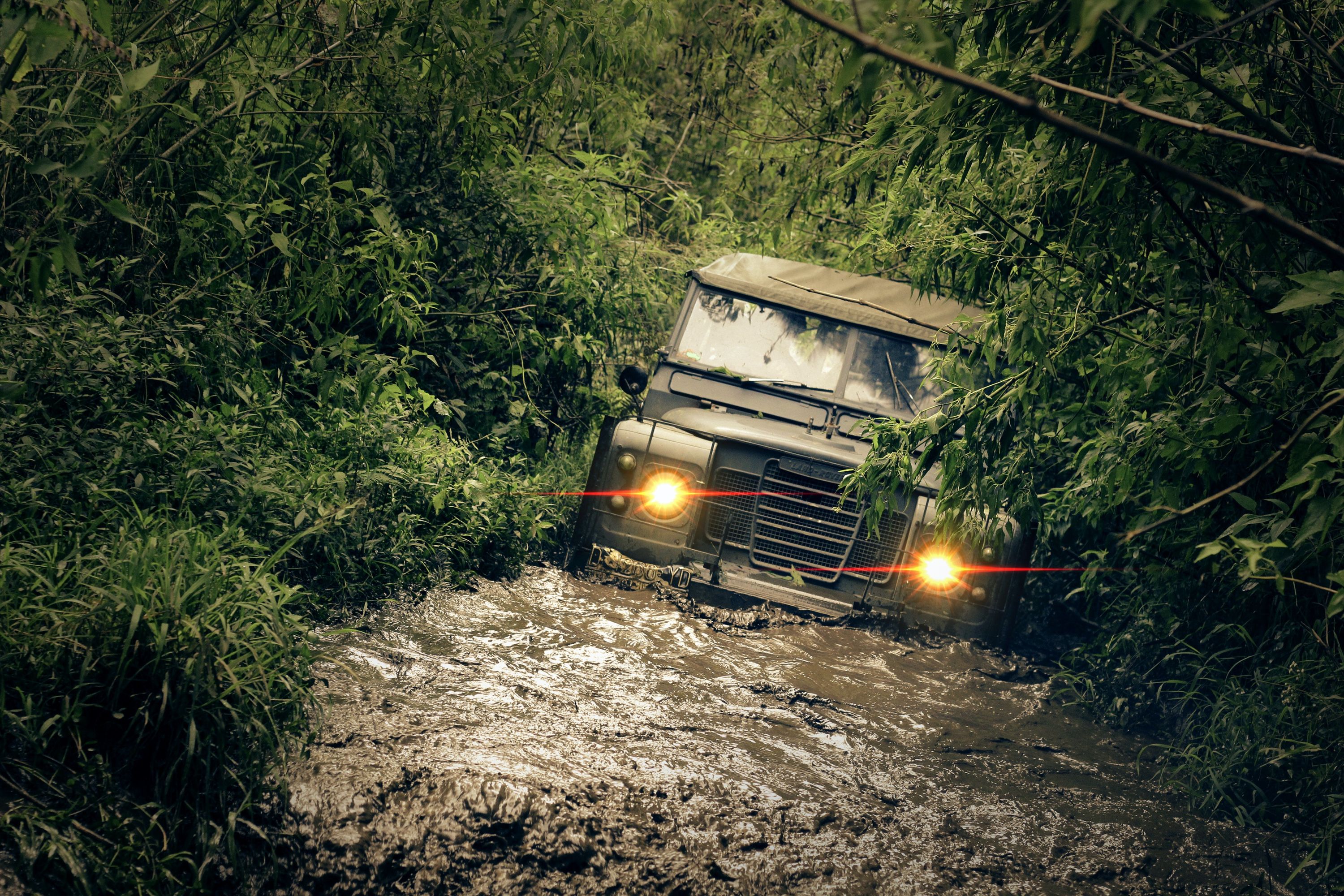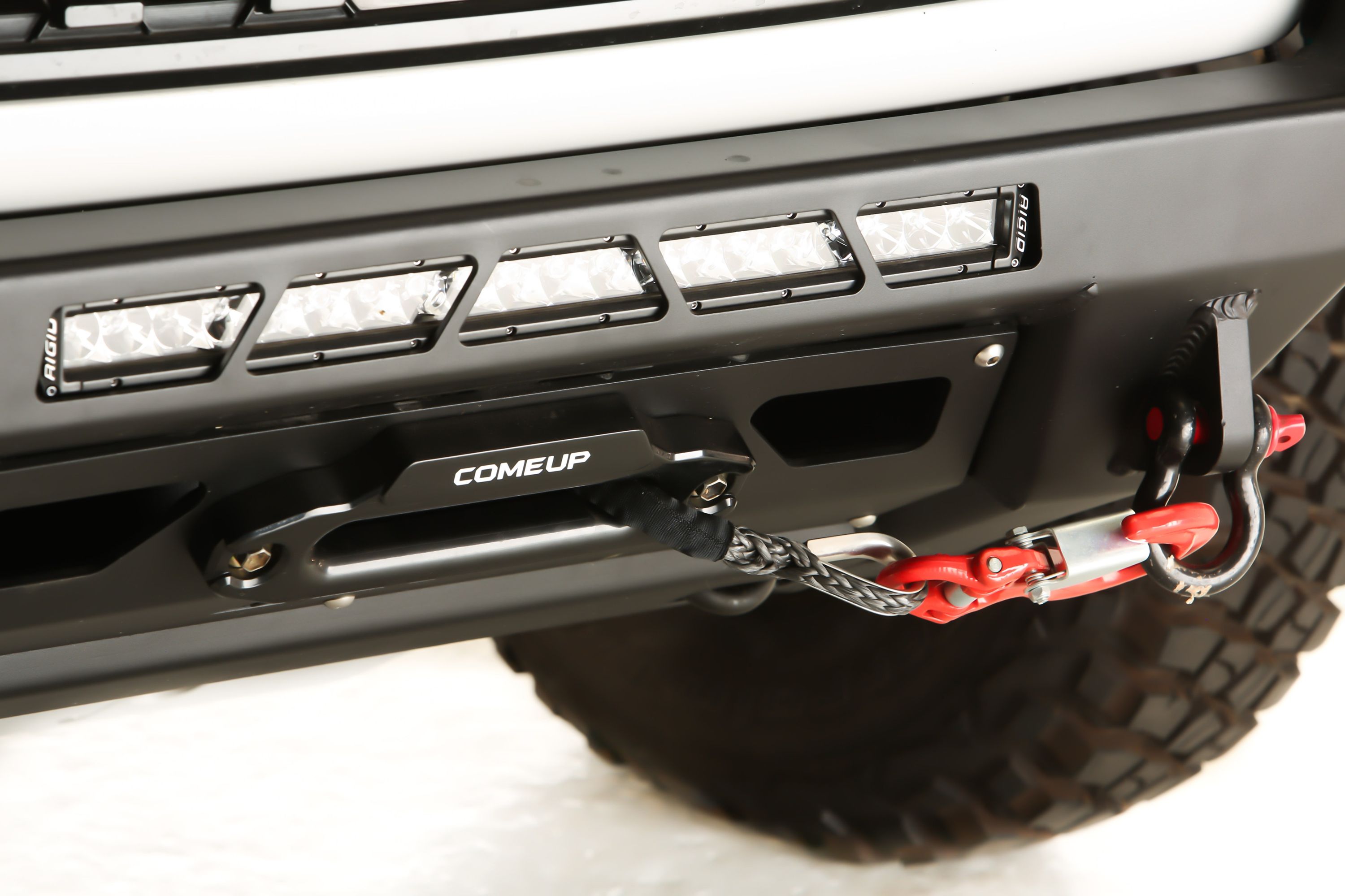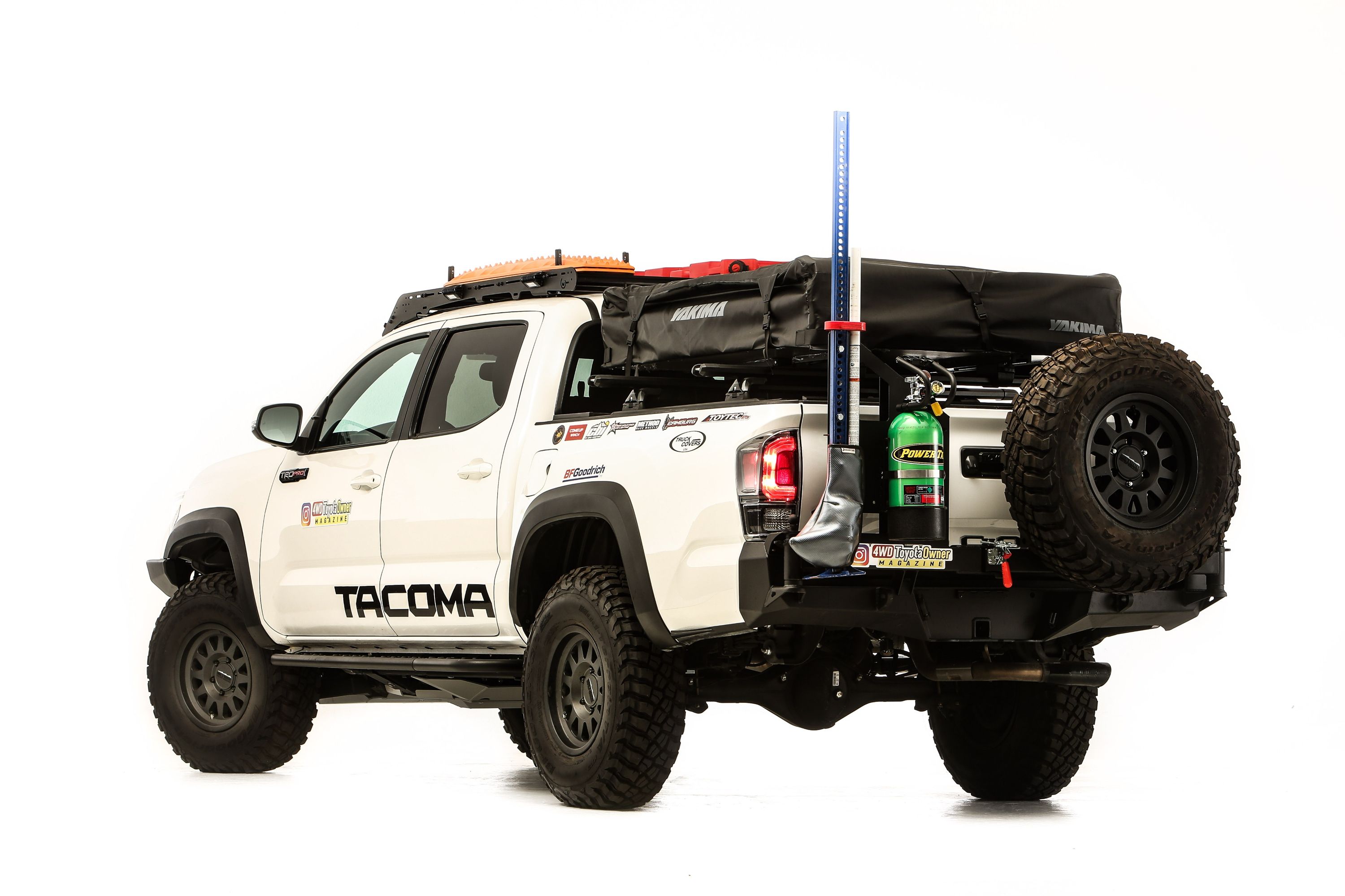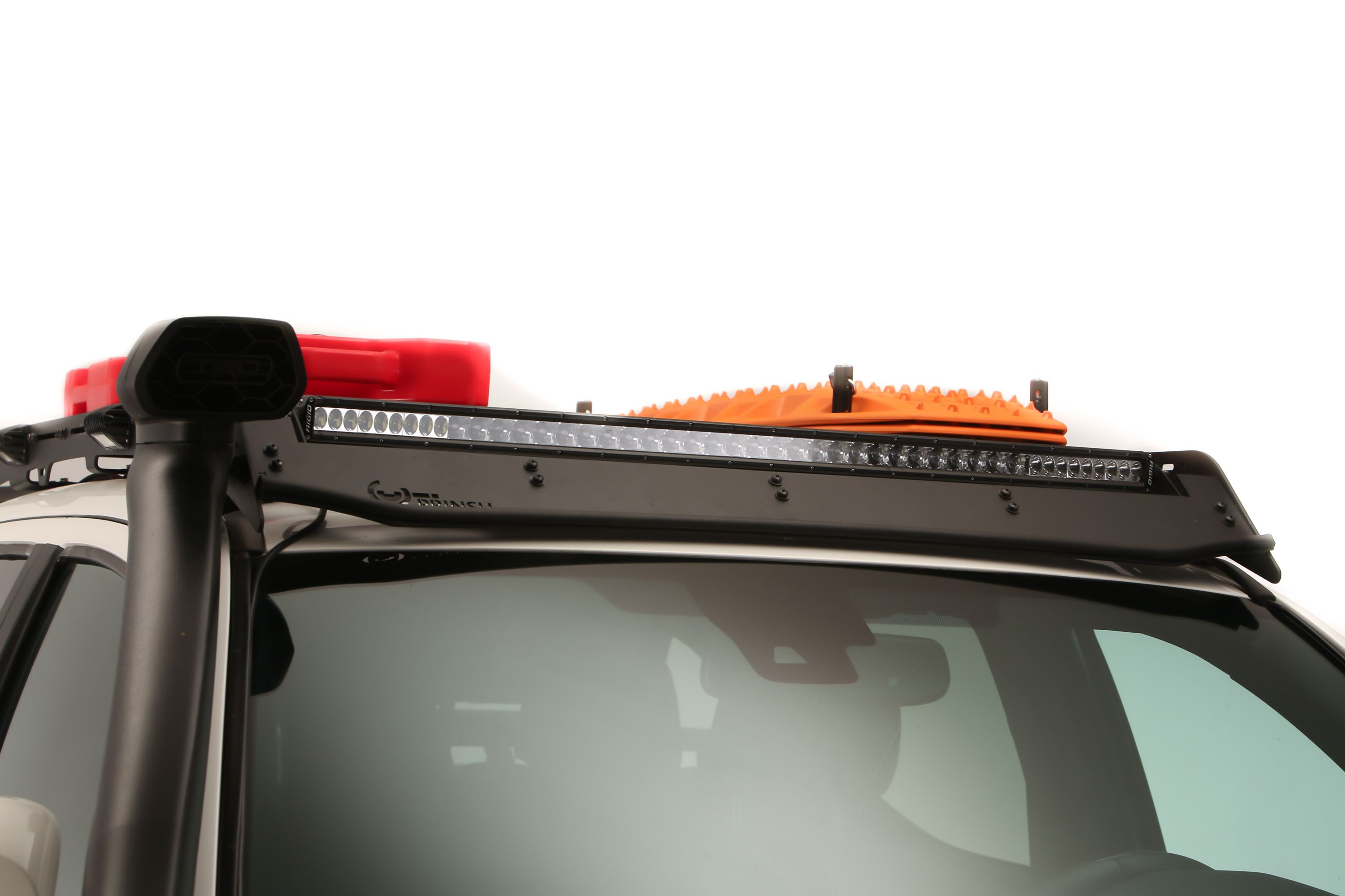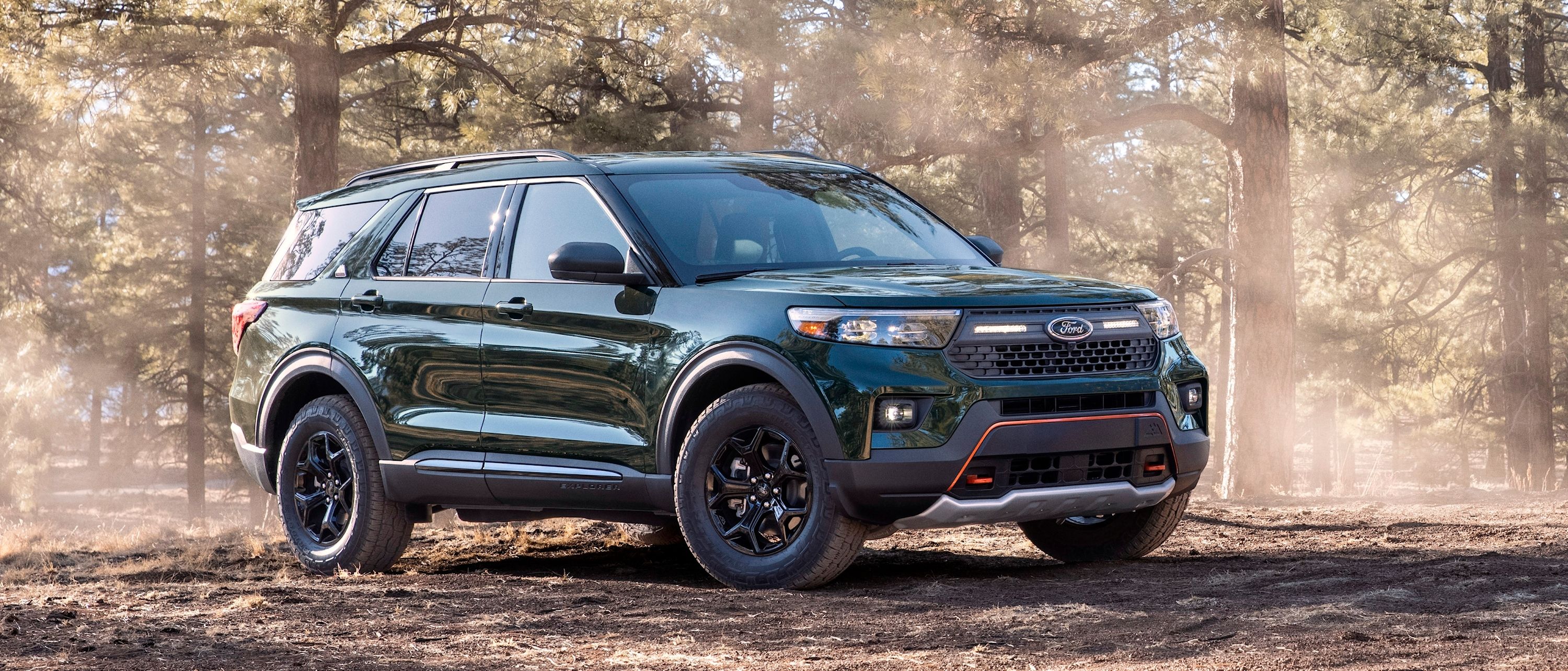
As an avid 4x4 enthusiast, you will need to perform an off-road recovery at some point. It's not a question of if, but when. You may have added $100,000 worth of kit to your Jeep Wrangler, but something will defeat it. Even million-dollar, specially developed off-road warriors get stuck.
When this happens, you need off-road recovery equipment. When it comes to off-road recovery tools, it's important to remember that there's no such thing as the best off-road recovery kit. There are far too many different scenarios for any one kit to be a cure-all. It's far more critical to know what is available, as well as the various off-road recovery techniques.
Off-Road Recovery Gear
Before we get to the recovery process, it's worth looking at the various tools available. Safety is paramount, so the first thing you'll need is a decent pair of gloves. It's also worth investing in the usual safety basics like a tire repair kit, a jump starter, a flashlight, a few essential hand tools, and a shovel. The shovel is 4x4 specific, but the rest of these items are part of the essential items you should have in your car as standard. Now, on to the more complex stuff - a list of gear you should have if going off-road.
Air compressor
An air compressor is one of the best investments you can make, as it will let you change the tire pressure whenever you please. In soft sand, you need to run at a low pressure. That same pressure can't be used on the road, however. A mobile air compressor connects to the battery and lets you adjust tire pressure at will.
Winches
A winch is the ultimate self-recovery tool. You simply look for the nearest sturdy piece of whatever, wrap the winch's cable around it, and presto. A winch is useless if there's nothing to tie it around, however. Alternatively, you can use what is known as a Dead Man's Anchor, which is burying something in the ground to serve as an anchor point when there are no other options.
Tow strap
People often purchase a tow strap thinking that it's perfectly fine for recovery purposes. A tow strap is for towing a vehicle. There's a big difference between a tow strap and a strap with an actual recovery rating. The easiest way to identify a poor quality or unsuitable strap is price. A basic 5,000-pound tow strap is around $12. 4x4-rated tow straps cost approximately $35.
Line extenders
It does exactly what it says on the box. If you have a 160-foot winch cable, and the nearest large tree is 170 feet away, that's going to be a problem. An extender lets you use shackles to extend a winch cable or recovery strap.
Snatch strap
This is a gnarly item and should generally be a last resort. It's basically a recovery strap but with some elasticity. The idea is that you connect one end of the strap to the stuck car and the other end to a 4x4 that can move. The moving vehicle rapidly drives forward until the elasticity reaches its limit. In other words, the recovery relies on the tension in the snatch strap to yank the other vehicle free. These straps tend to snap, and can cause damage to the vehicles or serious (even fatal) injury to anyone foolish enough to be standing out in the open nearby.
Tree savers
More often than not, you're going to connect the winch to a tree. As you can imagine, a naked cable connected to a 6,000 lbs off-roader can do severe damage to Mother Nature. A tree saver is an additional strap with an abrasion guard. It loops around the tree and connects to the winch hook.
Farm Jack
A Farm Jack is also known as high-lift jacks, and they are dangerous. There are several ways a high-lift jack can kill you. On unstable ground, it can easily topple the car, and if you don't keep a steady hand on it while jacking it down, it's like a baseball bat swinging fifty lethal strikes.
A high lift jack must only be used in combination with off-road bumpers and running boards, which have dedicated locking slots for this particular jack. Another common mistake is upgrading the tires and suspension system but not acquiring a high-lift jack. The jack that came standard with the car just isn't going to cut it. Read more about off-road modifications here.
Maxtrax
This is an ingenious invention that gives you a few feet of grip when you need to gain just a little bit of momentum. The one side of the surfboard-like item provides grip to the tire, while the other side grips to the surface. They don't always work as planned, so tell bystanders to stand well back. A 20-pound surfboard to the head is going to hurt.
Grille guard
A grille guard is not a dedicated off-road bumper. The guard's job is to protect the lights and body. Having said that, you do get a few grille guard/bumper combinations. They are more expensive than a basic guard, as they also have winch and high-lift jack mounting points. This makes them highly useful in conjunction with the other tools mentioned.
Hitches
There's a lot of confusion over what you should attach a recovery strap to. Whatever you do, don't tie it to the grill guard, axles or towbar. Any decent 4x4 already has dedicated recovery points through which you can put a shackle. A proper off-road bumper will also have dedicated recovery points.
Roof racks
A roof rack isn't technically a recovery item, but those items take space. There won't be any room left for anything else if you stuff the trunk full with off-road vehicle recovery equipment. Best keep the luggage in the trunk and put the off-road recovery tools on the roof.
Off-Road Recovery Techniques
First, you should never go off on adventures alone or without knowledge of all the essential off-road techniques. The same goes for training in recovery methods. It's worth paying for a quick day-long lesson on using the various devices safely and adequately. There are different recovery techniques, and the correct method to use will usually depend on the kind of terrain. Examples include gravel, riverbeds, mud, rocks, and dedicated off-road trails. The latter is the best place to get stuck, as a course will usually have a recovery team ready to go. And you have the option of escape routes if a particular obstacle looks too challenging.
But what to do when you get stuck? The main thing to remember is that almost all of the equipment mentioned earlier is dangerous, so the main aim is to keep yourself and your passengers safe. The second is to recover the vehicle without damage to the tires and rims. If they're ruined, you aren't going anywhere. Rather damage a door than a wheel.
Here are the steps to recovery when you get stuck:
- Avoid getting stuck in the first place: A lot of 4x4 misadventures start with the sentence, "hold my beer and watch this." If you go off-roading with that mentality, you're going to get hurt. Know the limitations of your car, and know when it doesn't have the necessary articulation, or whatever the case may be. Your standard Ford Explorer can't do what a Jeep Wrangler can. Accept that.
- Accept that you are stuck: The correct procedure is to accept that you aren't going anywhere soon, get out, and assess the situation. Standing on the throttle for another ten minutes will only do more harm. The engine isn't getting the necessary airflow, and the chunky tires are likely only digging you further into the muck.
- Use the basic, safe methods first: Start by lowering the tire pressure. A tire running a lower pressure has a bigger footprint, and that extra half-inch of tread might just be what gets you out of there. If that doesn't work, move on to the Maxtrax for added traction. If that fails, use the simple backward and forwards method. This works particularly well when driving on sand or in riverbeds. You move as far back as possible and then as far forward as possible. Do it enough times, and you might compress the soft sand to the point where the car can jump right out. A helpful trick in stickier situations is to use the steering wheel. In mud, you can easily dig a set of grooves. Going forward or backward is not an option, but you might get out by turning the wheel left and right, hoping that at least one wheel finds traction. A simple push from the passengers might also work, or you could try digging the car out with a shovel.
- Road building: Driving on rocks is tricky at the best of times, and recovery is never easy. Instead of showing off your high-lift jack or resorting to using a strap, instead, try giving yourself more traction by building a road. Let's say you're struggling to get the rear wheels to go up a slippery rock, and your car doesn't have a differential lock. Instead of using too much power, walk around and find some smaller rocks. Stack them between the larger ones and build a makeshift ramp to help those rear wheels out.
- Running on slicks: Mud has an annoying tendency to fill the grooves of the tires. At that point, your car might as well be on racing slicks. A set of Maxtrax should get the job done, but there are other options. You can fill the void your car is struggling to get through with grass, twigs, small rocks, etc. IT is easier to gain traction on a rougher surface, and you only need the tiniest bit of momentum. A shovel is also helpful for getting caked mud off a tire.
- Recovering with straps: There are two things you need to know here before you even begin. Use the correct recovery point and the right strap. A standard tow strap has no give, which makes it particularly dangerous. You need to take it slow and feel exactly when the slack is gone. Then it's a tricky balance of maintaining forward momentum while keeping the cars from going off track. A snatch strap is much better, as it has some elasticity. It won't snap as quickly, but you do need to keep an eye on it. It needs to be visible at all times. The lead car will pull away and pick the strap up from the ground. It will then stretch for a bit, and this latent energy will be transferred to the stuck vehicle. This isn't guaranteed to work, and you may need to do it a few times. Snatch straps can be horribly unpredictable, which is why we recommend a slow start and building up from there.
-
Using the winch: A winch should always be the last resort. If you're using it, you're either out there alone (bad idea), or the other car can't get close enough for recovery. There are a few don'ts when it comes to winching. You should never run a winch cable or rope over jagged rocks - for obvious reasons. Also, don't use the winch bare-handed or get too close to the spool, unless you really want to lose a finger. If you're using a tree saver, you'll require a D-Ring shackle. People often improperly connect the shackle. The circular part is not strong enough to carry the weight of the thing the tree saver is mounted to, as well as the car. Ideally, the tree saver should cling to the circular part of the shackle, while the other connection should fit over the pin.
Mount the tree saver as low down as possible. If you tie it six feet off the ground, there's a good chance you'll pull the tree down. Trees work better than rocks because you have no idea how much any given rock weighs and whether it's enough to get you out. Finally, keep well away from the cable when winching. There's literally enough tension to cut you in half. Once you're done with the winch, it's essential to spool it back up correctly. Criss-crossing the cable or rope will lead to costly repair bills. If you winched through mud, it's worth taking the winch in for a proper service. - Dead Man's Anchor: This is an unusual situation, but it does happen. It happened to us once because we were foolish enough to go overlanding without a support car. What happens if you get stuck, and there are no trees, rocks, or even a dried-up body of a llama to attach the winch to? To make a Dead Man's Anchor, you need a spare tire and a shovel. You dig a deep hole, attach the winch to the spare tire and chuck it in there, and cover it up. Make sure the hole is deep enough, otherwise that spare tire will fly out of there faster than a flying saucer launching from Area 51. This is just one example of how to create a Dead Man's Anchor.
Tips For a Safe Recovery
Out of all the methods mentioned above, you should be able to find the correct tactic for whatever situation you're in. There are two essential things to remember: always use the right tool for the job and always keep your tools in good condition. A slight yank on a standard tow strap can easily damage a car. These things love to break rear windows and light clusters. A rusty high-lift jack is unreliable and should not be used to lift a 6,000-pound vehicle.
When purchasing new items, ensure they have the correct rating. A 2,000-lb shackle is going to shatter instantaneously. The most important tip we can give you is to take the time to think about the recovery. Do you require heavy equipment, or is the solution simpler? And whenever possible, use your own gear because you can't always trust other people to keep theirs in good condition. And, of course, always use the correct vehicle when going off the beaten path, whether it's a modded out 4x4 pickup truck or a dedicated off-roading SUV.
Conclusion
Recoveries can be annoying, but they can also be fun when you stick to the safety guidelines. It's like a puzzle, but for grown-up off-roaders. There isn't much more to say other than ensuring you have the right equipment, and the necessary skills to operate them. Don't try to be a hero, either. While you might get caught up in the adrenaline of solving the puzzle, these tools are inherently dangerous. A dismembered arm isn't as easy to recover as a 4x4.

